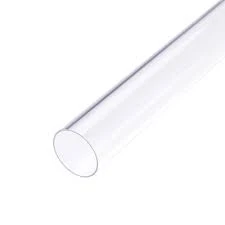Aug . 13, 2024 02:46 Back to list
Exploring Techniques for Joining HDPE Pipes in Various Applications and Environments
Understanding HDPE Pipe Jointing Techniques and Best Practices
High-Density Polyethylene (HDPE) pipes are renowned for their versatility, durability, and resistance to corrosion, making them a preferred choice in a wide range of applications, including water distribution, drainage, and industrial piping systems. However, the efficiency and reliability of HDPE pipelines largely depend on the methods used for jointing. This article explores the various techniques for HDPE pipe jointing and provides best practices to ensure a strong, leak-free connection.
Common Jointing Techniques
1. Butt Fusion Welding This is the most widely used method for joining HDPE pipes. In this technique, the ends of two pipes are heated to a specific temperature until they soften. Once the designated temperature is reached, the pipes are pushed together under controlled pressure, creating a molecular bond as they cool. Butt fusion is suitable for pipes of various diameters and is highly effective in creating durable joints.
2. Electrofusion Welding This technique employs an electrofusion fitting, which contains built-in heating elements. When an electric current passes through the coils, the fitting heats up, melting the pipe and fitting together. Electrofusion is particularly useful for smaller diameter pipes and in situations where space is limited or in-situ jointing is necessary.
3. Socket Fusion In socket fusion, one pipe end is heated along with the socket of a fitting until they reach the fusion temperature. Once softened, the pipe is inserted into the fitting, and pressure is applied. This method is typically used for small diameter pipes and is advantageous due to its simplicity and portability.
4. Mechanical Jointing Mechanical fittings or flanges can be used for HDPE pipes, providing the advantage of easy disassembly. This technique involves using bolts and nuts to secure the connection, making it a favorable choice for applications requiring maintenance or modifications.
Advantages of HDPE Pipe Jointing
The jointing methods for HDPE pipes offer several advantages
- Leak-Free Connections Proper jointing techniques result in strong, watertight connections, reducing the risk of leaks in piping systems. - Resistance to Environmental Stress HDPE joints exhibit excellent resistance to environmental factors such as soil movement and temperature fluctuations, ensuring long-term stability.
hdpe pipe jointing

- Corrosion Resistance Since HDPE is inherently resistant to chemical corrosion, the integrity of the joints is maintained over time, even in aggressive environments.
- Flexibility and Adaptability The flexibility of HDPE pipes allows for curved installations and adjustments, making it easier to navigate complex layouts.
Best Practices for HDPE Pipe Jointing
1. Surface Preparation Ensure that the surfaces to be joined are clean and free from contaminants. Dirt, moisture, and oils can compromise the quality of the joint.
2. Proper Equipment Use the correct equipment and tools specified for HDPE jointing. This includes fusion machines calibrated for the specific diameter and wall thickness of the pipes.
3. Follow Guidelines Adhere strictly to the manufacturer’s guidelines regarding temperature, pressure, and timing during the jointing process for optimal results.
4. Inspection and Testing After jointing, it is critical to inspect the joints visually and conduct pressure tests to ensure there are no leaks. This step is vital for the integrity of the entire system.
5. Training Ensure that personnel involved in the jointing process are adequately trained in HDPE techniques. Proper training reduces the likelihood of mistakes and enhances the quality of work.
In conclusion, HDPE pipe jointing plays a crucial role in the performance of piping systems. By understanding the various jointing methods and adhering to best practices, stakeholders can ensure the delivery of reliable and efficient HDPE pipeline solutions that stand the test of time. As industries continue to recognize the benefits of HDPE, mastering these techniques will become increasingly vital for engineers and contractors alike.
-
PVC Grey Sheet for Extraction: Chemical Resistant & Durable
NewsAug.19,2025
-
Durable PVC Pipe Fittings for Plumbing & Irrigation Needs
NewsAug.18,2025
-
HDPE Steel Belt Reinforced Spiral Corrugated Pipe | High Strength
NewsAug.17,2025
-
HDPE Pipe Fittings: Durable, Leak-Proof Solutions
NewsAug.16,2025
-
Premium CPVC Sheet: High-Temp & Chemical Resistant Solutions
NewsAug.15,2025
-
Durable PPR Pipe for Hot & Cold Water Systems - Easy Install
NewsAug.14,2025

